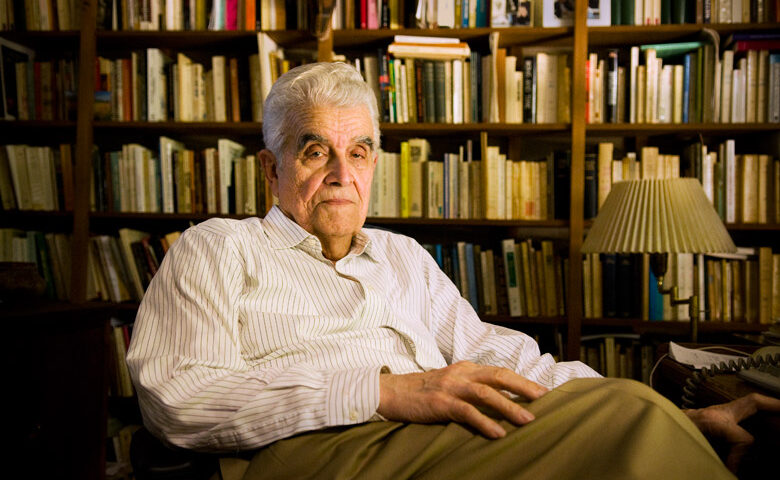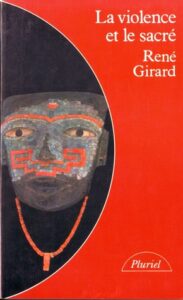The BEST: Violence and the Sacred

 Summary: In Violence and the Sacred (1972), René Girard offers a universal theory of religion and culture through the lens of violence. Girard sees sacrifice as functional. Ritual appeases and channels humanity’s innate desire for violence. This “mimetic” desire develops from jealousy for what others have. Left unchecked, this violence seeps into an amorphous being and will eventually find a victim. That victim will then seek more violence, leading to a destructive circle of vengeance that can lead to society’s destruction. Sacrifice offers a solution to this problem through channeling violence into a sacred moment. A surrogate victim is chosen; a third party to the conflict. The communal need for violence is pinned on this sacrifice in an act of deep catharsis.
Summary: In Violence and the Sacred (1972), René Girard offers a universal theory of religion and culture through the lens of violence. Girard sees sacrifice as functional. Ritual appeases and channels humanity’s innate desire for violence. This “mimetic” desire develops from jealousy for what others have. Left unchecked, this violence seeps into an amorphous being and will eventually find a victim. That victim will then seek more violence, leading to a destructive circle of vengeance that can lead to society’s destruction. Sacrifice offers a solution to this problem through channeling violence into a sacred moment. A surrogate victim is chosen; a third party to the conflict. The communal need for violence is pinned on this sacrifice in an act of deep catharsis.
Girard reads the Cain and Abel story as an example of this sacrifice and violence. Many interpreters try to deal with the question of why God accepted Abel’s sacrifice but not that of Cain. Girard reads the murder at the story’s climax as an explanation for its beginning. When Cain brought a grain offering to worship God, instead of animal sacrifices, the exigency for violence was not properly appeased. The need for blood hung in the air, and therefore, God indicated Cain would ultimately sin. God did not accept Cain’s sacrifice, leading Cain to act out the violence against his brother.
If sacrifice as a means of channeling violence is so essential to human survival, why aren’t humans at each other’s throats nowadays when we no longer have sacrifice? Girard argues that we have something that the ancient world did not: A justice system. A justice system can be viewed as an impartial third party to conflicts. It can resolve conflicts without sacrifice.
Why this is The BEST: Connecting scapegoating and violence is one way to understand the current rise of antisemitism. When two parties are in a vicious cycle of vengeance, the only way to break that is to find an innocent third party, a minority, to pin the blame on. Historically, this has taken the form of physical violence towards Jews.
As a teacher in a Jewish Day School, my students experience a different form of antisemitism, not one of bodily harm, but one of social media and infographics. They are bombarded with brightly colored posts delegitimizing core tenets of Jewish peoplehood. This violence of the psyche slowly strips away elements of their selves. Frustratingly, Girard’s solution (an impartial justice system) doesn’t exist for my students. A review board can or cannot take down a post, but another easily takes its place to breed hate on social media.
Girard provides a fascinating framework for understanding this incessant hate, if not a means to stop it. Nevertheless, I’m inspired by Girard to break the cycle of this violence in a different way, by teaching my students that “hate breeds hate” and by turning to their community for support in defending their sense of self.
Zissy Turner teaches Tanakh and Gemara at SAR High School in Riverdale NY. She is studying to be a Yoetzet Halakha through Nishmat’s Miriam Glaubach Center.
Click here to read about “The BEST” and to see the index of all columns in this series.
